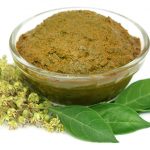
Green glue: Tannins from softwood are being used as a renewable alternative to toxic phenol compounds in glue
Thursday, August 09, 2018 by Rhonda Johansson
http://www.naturalnewsresearch.com/2018-08-09-green-glue-tannins-from-softwood-are-being-used-as-a-renewable-alternative.html

A Finnish project begun last year seeks to provide a safe and natural alternative to the toxic phenol compounds used in glues. As part of their SusBinders project, the VTT Technical Research Centre of Finland, the National Resources Institute Finland (Luke), and the South-Eastern Finland University of Applied Sciences (Xamk) developed an industrial process that extracts water-soluble tannin-polyphenols from Finnish softwood bark. The project is expected to be completed by March 31, 2020.
This is taking sustainable adaptability to another level. Before this project, around three million tonnes of softwood bark – end-products of the Finnish forest industry – were burned as is or as a processing energy source in various pulp mills. This new venture expands the potential uses of Finnish forest biomass and could pave the way to the introduction of a new type of business for residents.
Scientists involved in the study say that the tannins found in softwood bark such as acacia can be used for glue applications. While tannins are mostly used in the production of leather, its use for glue has huge market potential. To date, phenol-based glue resins have a global market of approximately four million tonnes per year and generates 10 billion Euros in revenue.
Using tannins for glue is not a new concept; some companies have tried this in the past. However, an efficient extraction process was never developed until recently. In the SusBinders project, researchers are now able to separate viable polyphenolic value components from the bark. Hopefully this will lead to a massively increased scale in production. Each institution will be providing their own expertise in this:
- VTT has developed a purification process that will ensure that the tannin extracts can be used to formulate glues and resins.
- Luke has focused on optimizing the extraction process.
- Xamk developed the continuous extraction process which includes preparing and testing wooden panels glued with the tannin-based glues.
The goal of the project is to ensure that extraction processes done on softwood bark provide technical and economic sustainability in terms of carbon footprint.
Phenol glues
Phenolic adhesives are widely used by various industries. They are the condensation products of phenol and formaldehyde and are relatively inexpensive to make. Phenolic resins readily adhere to both organic and inorganic surfaces, making them an ideal glue. That being said, the substance can be toxic over time and can lead to the onset of various conditions through inhalation or absorption.
Phenols are easily absorbed in the lungs. Repeated and excessive exposure to these chemicals can cause dizziness and difficulties in breathing. The adhesives are also highly irritating. Even diluted solutions can cause severe burns. A report by the Centers of Disease Control and Prevention (CDC) has stated that death has occurred from prolonged skin contact to a phenolic adhesive.
Phenols are fatal if ingested. A dose of 50 to 500 mg can harm a child. Adults can die if they ingest a gram to 32 grams of the substance.
On softwood
Should this project prove to be successful, it is possible that we can apply the same concept here. American softwoods are renowned for their quality and strength. There are various species to take note of. These include the Southern Yellow Pine, the Eastern White Pine, Western Pines, Hem-Fir, Western Hemlock, Douglas Fir, Spruce-Pine-Fir, Sitka Spruce, Engelmann Spruce, Western Larch, Western Red Cedar, California Redwood, Bald Cypress, Alaskan Yellow Cedar, Port Orford Cedar, and the Incense Cedar.
Find more natural alternatives to toxic substances at Natural.news.
Sources include:
Tagged Under: Tags: eco-friendly, environmente, goodscience, natural alternative, natural glue, phenol adhesives, phenol resins, research, softwood, softwood barks, tannins, toxic phenols, trees, wood pulp





